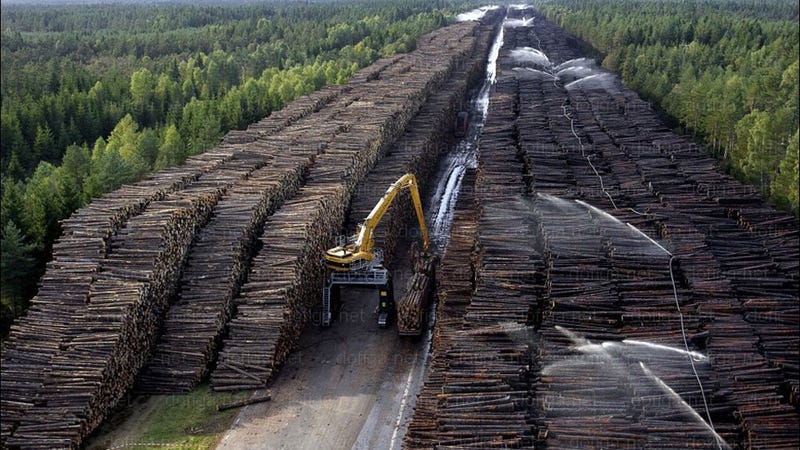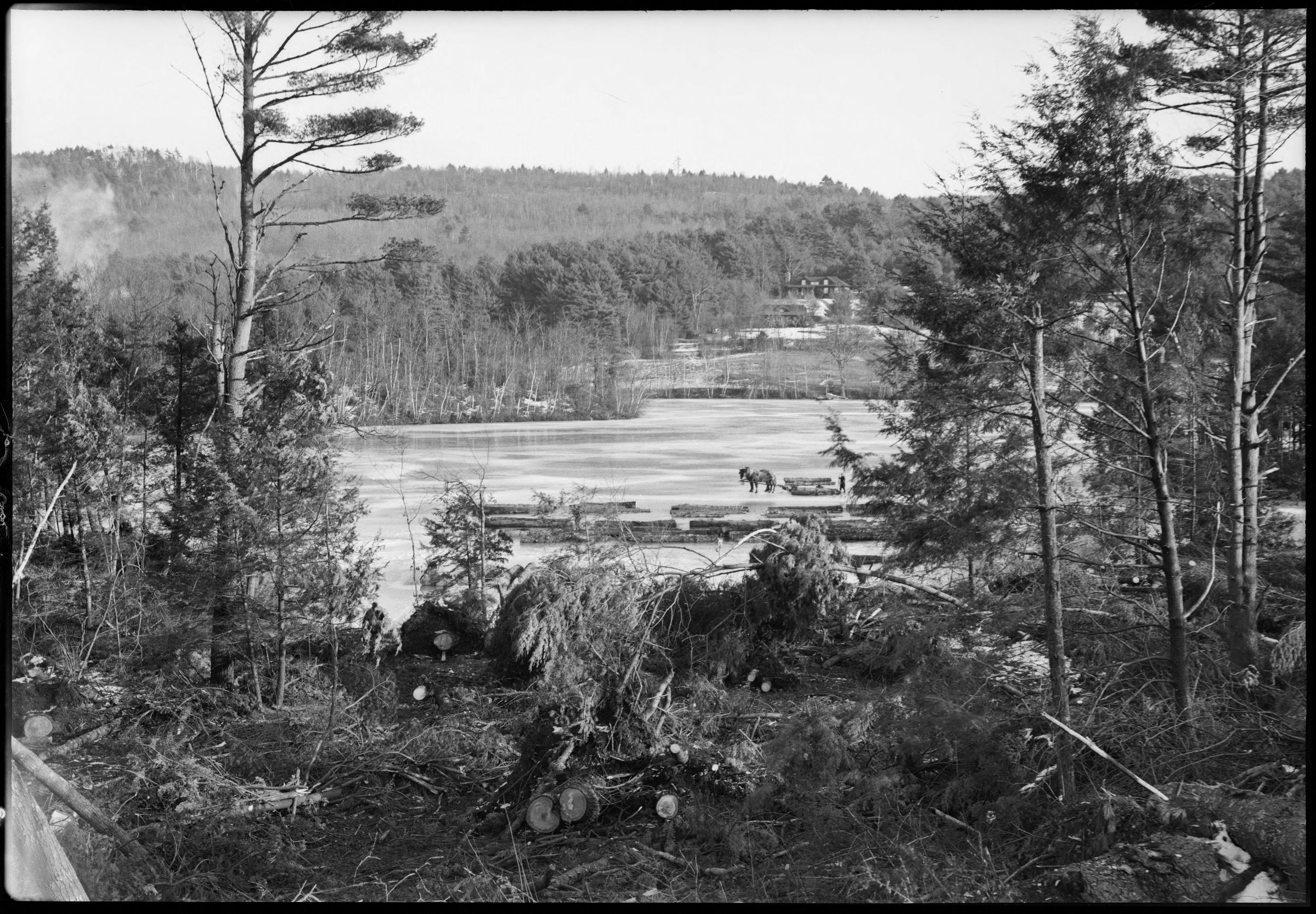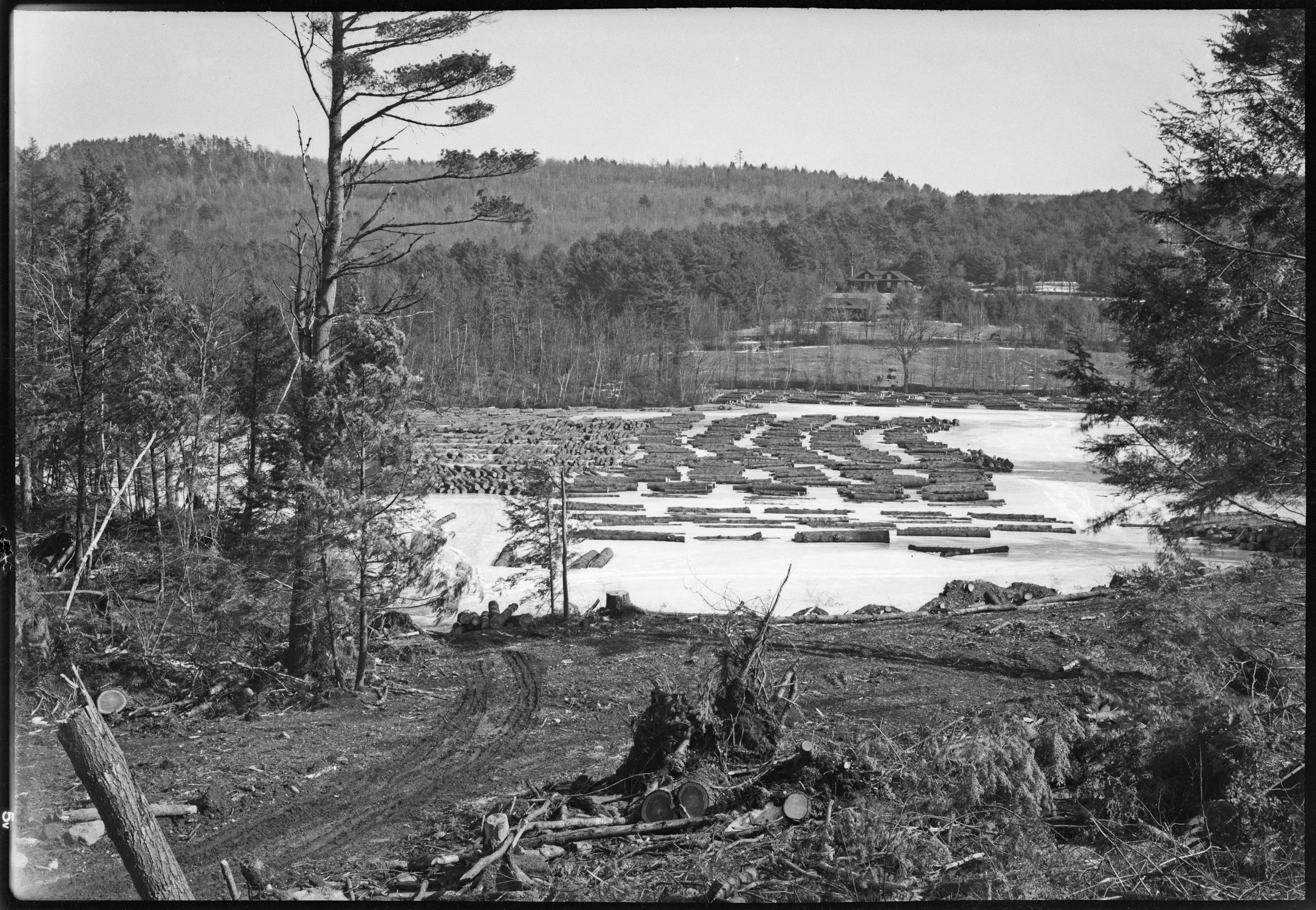
Lots of btu's laying there. Saw this on the web and figured you guys would have your jaw drop like mine did!


Pulp yard...they don't want it drying before it can be used...Looks like they got sprinklers going on it. I guess you wouldn't want it to catch fire.
600x30=18K
Here's a link to the story and a video as well. Heck of a loading system and at least they are not letting it all go to waste. We could learn something from them with all the ash bore dead we have.
http://gizmodo.com/5909847/you-have-never-seen-so-much-wood-in-your-entire-life
wowzerz!
"OK boys, now get out your fiskars...."
The good thing about cutting all those trees down is that several walmarts& royal farms took their place which creates a better habitat for obese people and illegal aliens.View attachment 464195
Allegedly600x30=18K


That's only 2 towns over from me...i haven't been up there in a long time thoughConnor's Pond, Harvard Forest, Petersham, MA following the '38 Hurricane -- hauling logs out onto the frozen pond in winter, so they'll sink and be covered in water until they can later be retrieved to be milled. Lest beetles and the like got to them in the several years it took to process the windfall. (And if WWII didn't come along and ramp up lumber purchases for military bases, who knows how many more years it would've taken.)


That is pretty cool. Did they have chain saws in '38?
Enter your email address to join: